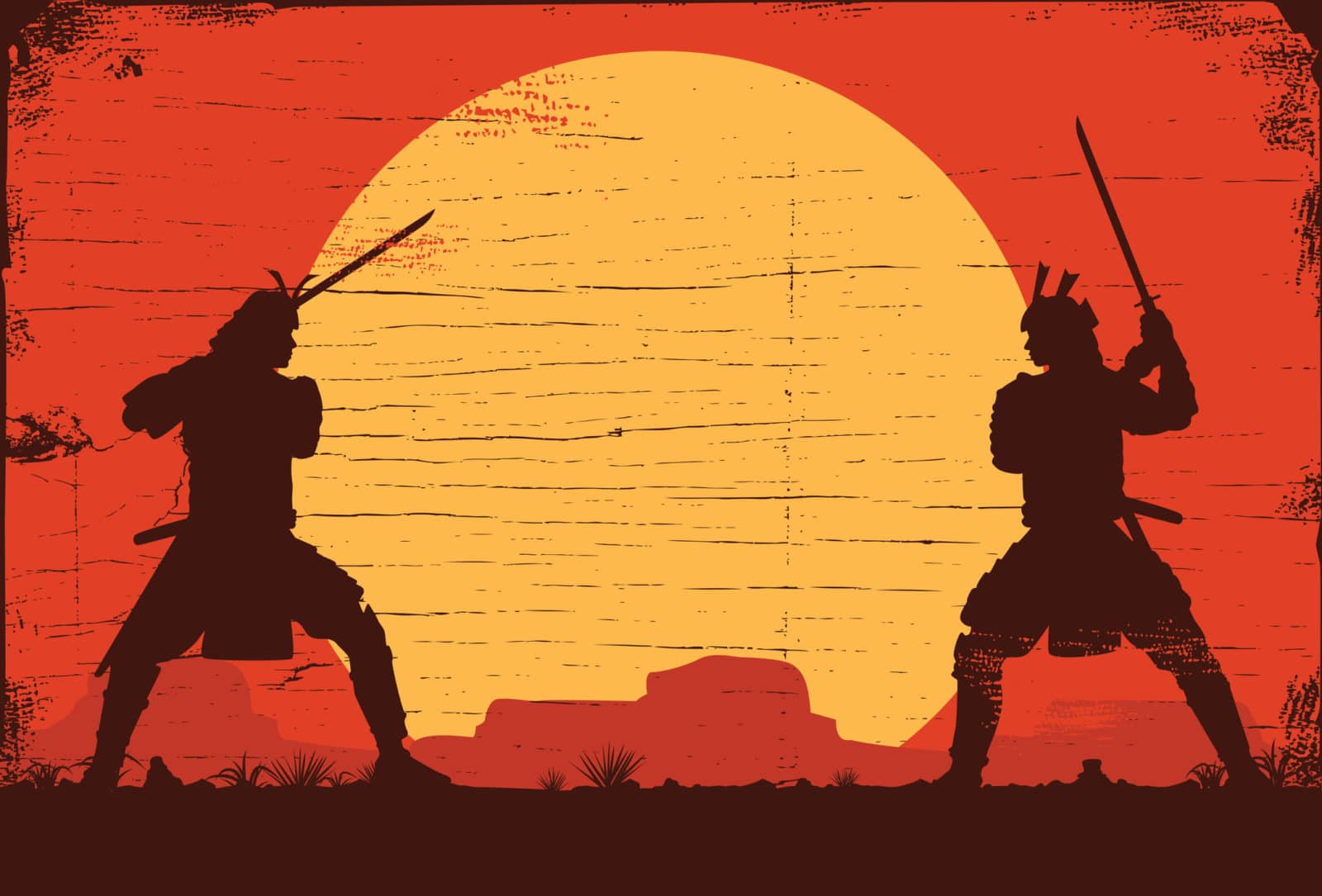True story…
In 1600 an English sailor, William Adams, landed in Japan on a trading mission. By his death 20 years later, he had achieved the rank of Samurai and was the counselor to the Shogun (the supreme military dictator), Tokogaway Leyasu.
Also, yes, Adams had shockingly red hair, which made him an oddity in feudal Japan. The world-famous book “Shogun,” which spawned a TV miniseries, video game and soon to be a Hollywood movie, was based on Adams’ story.
The journey from Europe to Japan was fraught with danger and disaster. Only 1 of the 5 ships that left finally made it.
The surviving sailors faced unimaginable culture shock, an insurmountable language barrier, and a feudal political system driven by the Samurai warrior code. (Which meant immediate death or ritual suicide for even the slightest infraction.)
Adams and his ragtag crew found themselves in an alien world. Only through their careful planning and bold action were they able to survive.
Here are four secret lessons from the Redheaded Samurai you can apply to any marketing strategy to boost your ROI.
Secret 1: The Market is Always Right
When Adams landed, he faced a hostile market. (They literally wanted to kill him!)
To survive, Adams had to adapt quickly. Instead of applying brute force negotiating, he had to adapt to the Samurai code and Japanese culture.
He dressed in traditional Japanese clothing. Learned the language and social norms. Then looked for opportunities to provide service to local Samurai leaders.
In essence, he developed empathy and understanding of his market before attempting to sell them anything.
Once he understood his market, he was able to position his message and persuade the most powerful Samurai to listen to him.
The lesson for marketers? To succeed, there is no more important element than understanding your market—from the inside out.
All things considered, the marketer who knows his market the best will win. Those that don’t take the time to understand the wants, desires, cultural nuances deeply and language of their market will fail.
Which type of marketer are you?
Secret 2: Bold Action is Required
Once Adams and his crew had learned the customs, they needed to take bold action to win the respect of the Samurai leadership.
To do this, Adams executed an attack on the enemy of the leading Samurai leader—the Portuguese Franciscan monks who had a stranglehold on trade between Japan and China.
This daring attack paved the way for a deeper and more collaborative relationship with the leading Samurai. In the end, Adams became one of the Shogun’s most trusted counselors.
The lesson for marketers comes in two parts. First, understand who are your most important influencers or customers. Second, take some risks to get their attention and start building trust.
The most obvious examples are staging marketing stunts or events that get a lot of attention on social media.
However, another way to take bold action is to create and offer “over-the-top” value to these most valuable customers and influencers.
Unanticipated bonuses. Additional service added to an already high-value package. Access to insider information or insight that only they can use. Gestures like these go a long way to grab the attention and cement the loyalty of your most valued customers and influencers.
How are you implementing bold action in your marketing strategy?
Secret 3: Value Trumps Speed
The minute Adams made landfall in Japan, he began to plan his departure. In the process of haphazardly demanding assistance, he offended a mighty Samurai and nearly got himself, and his crew killed.
The only way Adams was able to secure the help he needed was first to follow the rules and customs of the Japanese. Then to offer value. In this case, he began to teach them European fighting strategies that helped the local Samurai leaders gain an advantage over their rivals.
The marketing lesson? Your market, audience, customer won’t care about your offer, until they “feel” you’ve provided enough value.
Now, the concept of value is interesting because it’s a subjective concept. What you deem valuable is junk to someone else. The trick is to find and deliver the value that’s most important for your audience. It doesn’t matter what you think constitutes value. It only matters that your customer believes and more importantly, “feels” that what you’re offering is valuable to them.
This means you must deeply understand your audience’s most pressing fears, aspirations, frustrations, and desires. Then align your product and messaging to connect the dots between their desire and your product or service.
The more closely you align what you sell with what your customer’s desire, the more response, loyalty, and profit you’ll generate.
How can you build more value into your current products and offers?
Secret 4: Patience is Essential
Initially, Adam’s was in a hurry to “make things happen.” However, what he quickly learned was to influence the very powerful Samurai leaders he needed patience.
To begin with, Adams needed to learn Japanese and the customs of the Japanese people before he could communicate well.
Then he realized that his primary market—the powerful Samurai leaders—could not be approached directly as was European custom. Instead, they were accustomed to going through a ritual of face-saving pleasantries before getting down to business.
Once Adams learned this lesson, he was able to get his message and requests accepted and acted on.
The same concept applies to modern digital marketers. As we’ve all acknowledged, our customers are in control of the WHEN, HOW, and IF they’ll pay attention to our message. In order to break through and get your customer’s attention and action, you must play by their rules.
This means understanding how, when, and why your customers use social media, watch television, listen to the radio, stream video content, and read magazines.
It means planning your channel and content strategy to be present and helpful for your customer. It means not relying on one channel or one content element to “drive sales.” However, to think of every touchpoint as a contributing factor to making the sale.
Ultimately, it means you’ve got to practice patience as you influence your customers one step at a time. When you’ve stepped through your customer’s ritual of engagement, they’ll reward you with their patronage and loyalty.
In what ways can you practice more patience in your marketing?
The Big Secret
The story of the redheaded Samurai is fascinating, and the lessons it teaches can improve your marketing and selling success.
But if you remember nothing else, it’s this: The combination of understanding, value, bold action, and patience is what produces results. Applying a single lesson, while helpful, won’t provide the breakthrough success you’re looking for.
It’s a marketing and life philosophy, that when applied, always produces success. In essence, it’s the Japanese idea of Kaizen—continual incremental improvement.
How have you built the idea of continual improvement into your marketing strategy?
About the Author
Collin Dayley is SVP of Growth and Strategy for One Partners, a leading performance marketing agency with offices in Salt Lake City and Seattle. Learn more about how One Partners can help you apply the secrets of the redheaded Samurai to your marketing at www.one-partners.com


